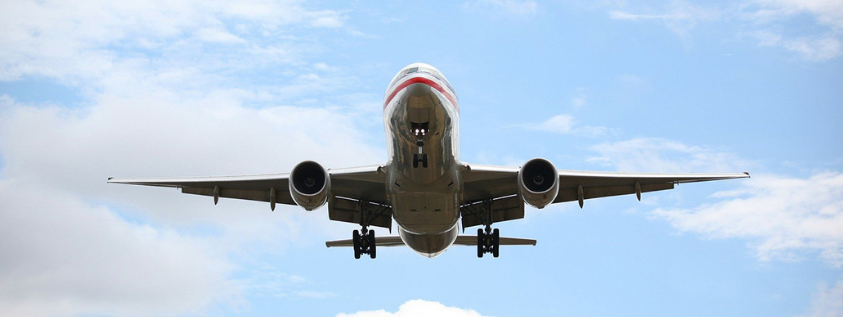It is very common nowadays to use the airplane as a means of transportation for trips, especially if they are long. When buying airline tickets, it is not usual to look at the type of flight you are going to take, so today we explain the types of commercial flights that exist and their characteristics.
Types of commercial flights within airlines:
A first division that should be taken into account is the one that distinguishes between short-haul flights (between 30 minutes and three hours), medium-haul flights (between three and six hours) and long-haul flights (more than six hours).
Once this concept has been clarified, there are different types of commercial flights:
- Scheduled flights: these are the most popular commercial flights. Also called “point-to-point” flights, they are pre-established routes so airlines can schedule and market them months in advance. In these cases there is already a specific route and destination that is being operated by one or more airlines and, due to the high demand for that particular destination, it is decided to offer the flight on a regular basis with pre-established schedules and frequencies, which may vary depending on the seasonality of demand, as happens in highly touristic destinations. Within the regular flights, we find direct flights and flights with stopover or connection.
- Direct: when the aircraft does not make any intermediate stop and goes directly to the destination city.
- Flights with stopovers: these are flights that make one or more stops, either for technical reasons (refueling or to board more passengers) and are therefore always longer than a direct flight.
- Charter flights: are mainly characterized by not having a specific schedule. These on-demand flights are normally used when a person, entity, travel agency, etc… rents this service, and both schedules and catering and other services on board are based on the customer’s needs. Some airlines have a special fleet for this type of trip. The vast majority of these flights are seasonal and are used at special times such as during vacations, long weekends, sporting or musical events… The purchase of airline tickets is usually managed directly through the airline or a specialized portal. However, charter flight tickets are usually sold by intermediary companies such as tour operators or travel agencies.
- Corporate aviation: When large companies, celebrities, or in any situation that requires the transportation of a small number of people from one point to another -sometimes to airports outside the regular airline circuits- they resort to corporate aviation. This type of aviation operates airplanes of between 6 and 24 seats, generally with a totally “a la carte” service. In other words, the interested party contacts the operator to indicate the route, timetable, and number of passengers, and the operator provides an economic quotation based on this data. The price often includes the return flight, if the aircraft returns to its empty base after the service. All major airports have a terminal for corporate flights, and many companies and celebrities have their own aircraft for this purpose.
- Low-cost flights: The low cost appeared in the decade of the ’80s of the last century, and since then they have gained an important share in the segment of short-haul flights. These flights are designed to offer passengers a competitive price. To this end, the ticketing infrastructure is reduced to a minimum, onboard amenities are limited, and any extra services are paid for in addition to the standard fare. They are usually short-haul flights, with a multitude of weekly frequencies.
- International flights: all those flights that have as destination a country other than the one in which the flight started. Within this classification, we could differentiate between international flights and intercontinental flights, which have as destination a continent other than the one where the flight started.
- Intercontinental and transoceanic flights: as we have already explained, within international flights we find intercontinental flights, which are often also transoceanic or transpolar flights. These flights cross the oceans – usually the Pacific or Atlantic oceans – and are called transpacific or transatlantic flights, respectively. The Arctic lands and its ocean are also regularly flown over by intercontinental transit aircraft. Did you know that the shortest route between Barcelona and Beijing passes through Siberia?
- Domestic flights: these are by volume one of the most important segments for airlines, as they are the most common for passenger transportation. They cover the territory of a country by connecting the airports of its different cities, and are generally trips of less than 3 hours, although in countries such as Russia, China or the USA they can last up to 7 hours. They are flights with few formalities beyond the mandatory airport security checks.
